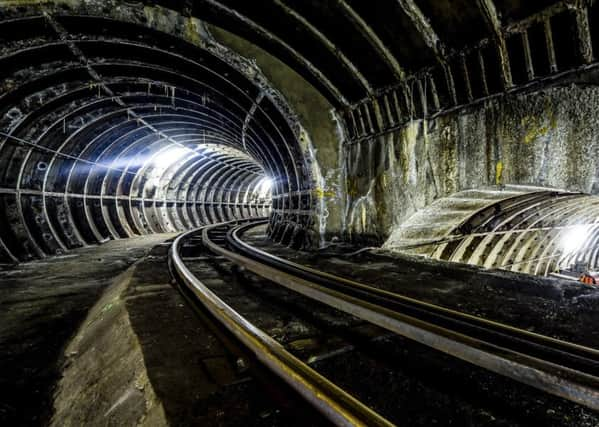Tourists to tunnel their way into rail history


Graham Devitt, from Glasgow, is part of a three-man team which has maintained the former Post Office Railway in London.
The 6.5-mile line opened 90 years ago to transfer mail between the city’s six major sorting offices and its main stations, between Liverpool Street in the east and Paddington in the west.
Advertisement
Hide AdAdvertisement
Hide AdFour million items a day were carried in the tiny, driverless electric trains – the first in the world – until 2003.
After operating for 22 hours a day and employing 220 staff, the railway was mothballed following the Royal Mail’s decision to move most mail sorting out of central London.
However, part of the system will be revived in July when it is opened to the public for the first time, enabling visitors to take a unique journey through tunnels just 7ft wide.
New trains have been built to accommodate passengers, but they can only carry about 20 people each.
Devitt, 56, has been at the heart of the operation for ten years, in two stints which started in 1990.
The engineer has been responsible for keeping the trains running – and latterly to keep the dormant system from flooding or affecting the London Underground, whose tunnels are just inches away in places.
Tunnels bored for the new east-west Elizabeth line, or Crossrail, which opens next year, are nearly as close.
The former mail line runs beneath the water table, and voids like disused tunnels under London cannot be abandoned.
Advertisement
Hide AdAdvertisement
Hide AdDevitt said the Royal Mail chose to maintain the system in cold storage because of the huge cost of filling it in.
He said of the operational days: “The trains ran automatically every six minutes, so if any faults came up, you had to fix them within that time.
“It was a very good system – the railway was like a big conveyor belt moving mail between the stations and sorting offices.”
Devitt also recalls working in the train depot beneath the Mount Pleasant sorting office in Clerkenwell.
He said: “It was like a massive hive, with practically every type of trade you could think of repairing and rebuilding the trains.”
The former Clydeside shipyard electrical technician left the system in 1996 when half of it was closed following British Rail privatisation, which led to fewer mail trains running and the remainder being switched to a station in north-west London.
The end of the line came seven years later when the Royal Mail shifted its focus to large purpose-built sorting offices outside central London because its older buildings had become outdated.
Devitt had moved to work as a sorting office engineer, but returned underground four years ago when, because of his past expertise, he was offered a job keeping the system ticking over.
Advertisement
Hide AdAdvertisement
Hide AdIt has involved checking more than 100 sumps where water collects, many of which are operated by hand.
Devitt said that while the railway was never secret, many people were unaware of its presence.
He said: “It could be accessed from lifts in buildings used by other office workers, using a key to descend to that floor. People did not believe it was there when I told them where I was heading.”
Ahead of the opening, a series of publicity stunts have been staged to raise awareness of the project.
They even included Andy and Jamie Murray launching a new tennis kit on a specially constructed court built on one of the old platforms in the run-up to last year’s Wimbledon championships.
The line will be called Mail Rail at The Postal Museum, which is being launched at the same time to tell the story of the Royal Mail.
Devitt said widespread interest in the line would make it a tourist hit.
He said: “A lot of the people who have been shown round on private tours have loved it and were fascinated.
Advertisement
Hide AdAdvertisement
Hide Ad“Miners particularly like it as a day out now that the deep mines have shut.”
Transport author Christian Wolmar was equally enthused. He said: “This has fabulous potential – a kind of toy train beneath London.
“I am sure it will be full every day, though my preference would have been to have turned it into the most frightening ghost train in the world!”
Visitors will only ride over a half-mile stretch of the line and Devitt said it was unlikely to be extended because of the lack of emergency exits.
He said: “It will be a slow ride at just a few miles an hour – to make it last.”